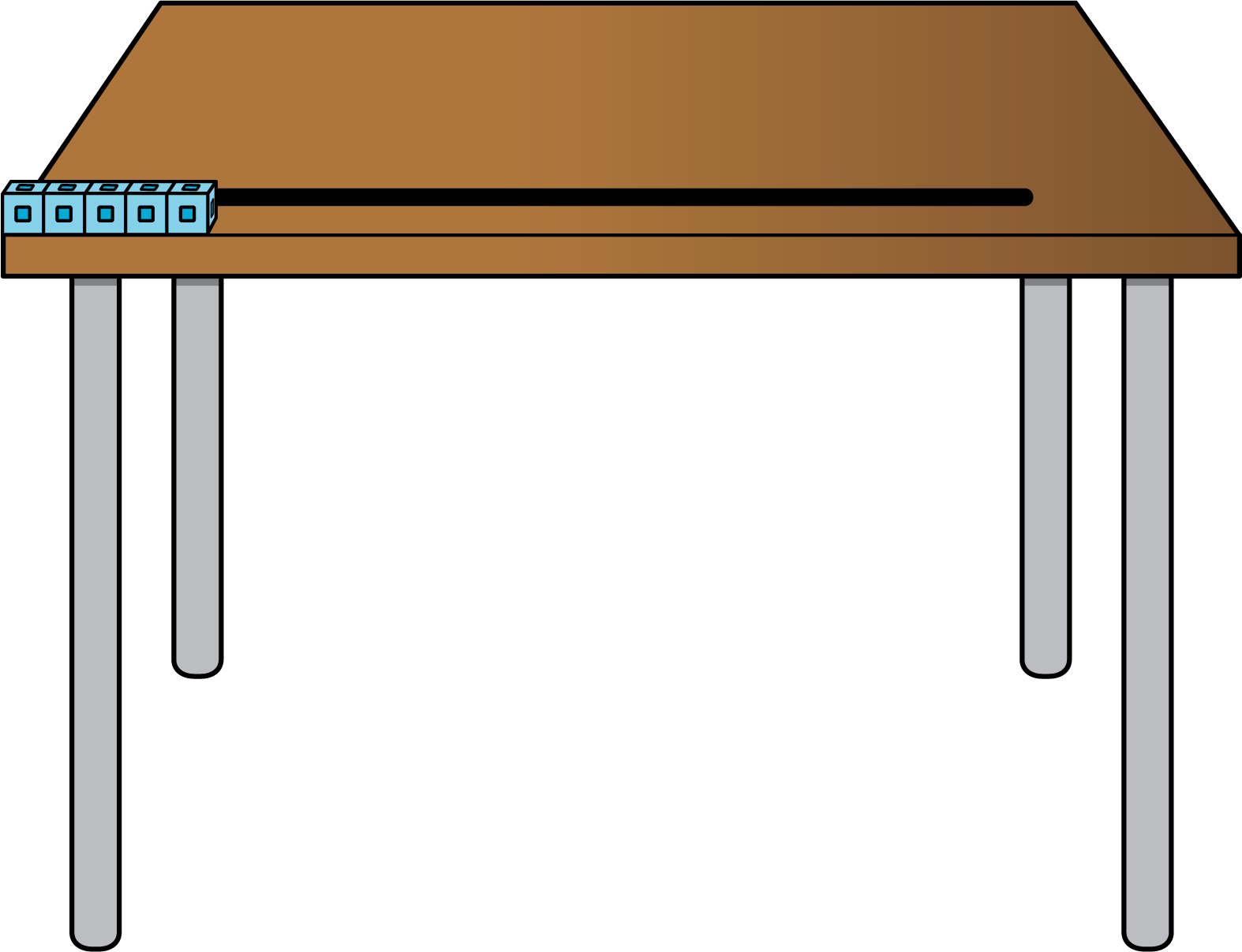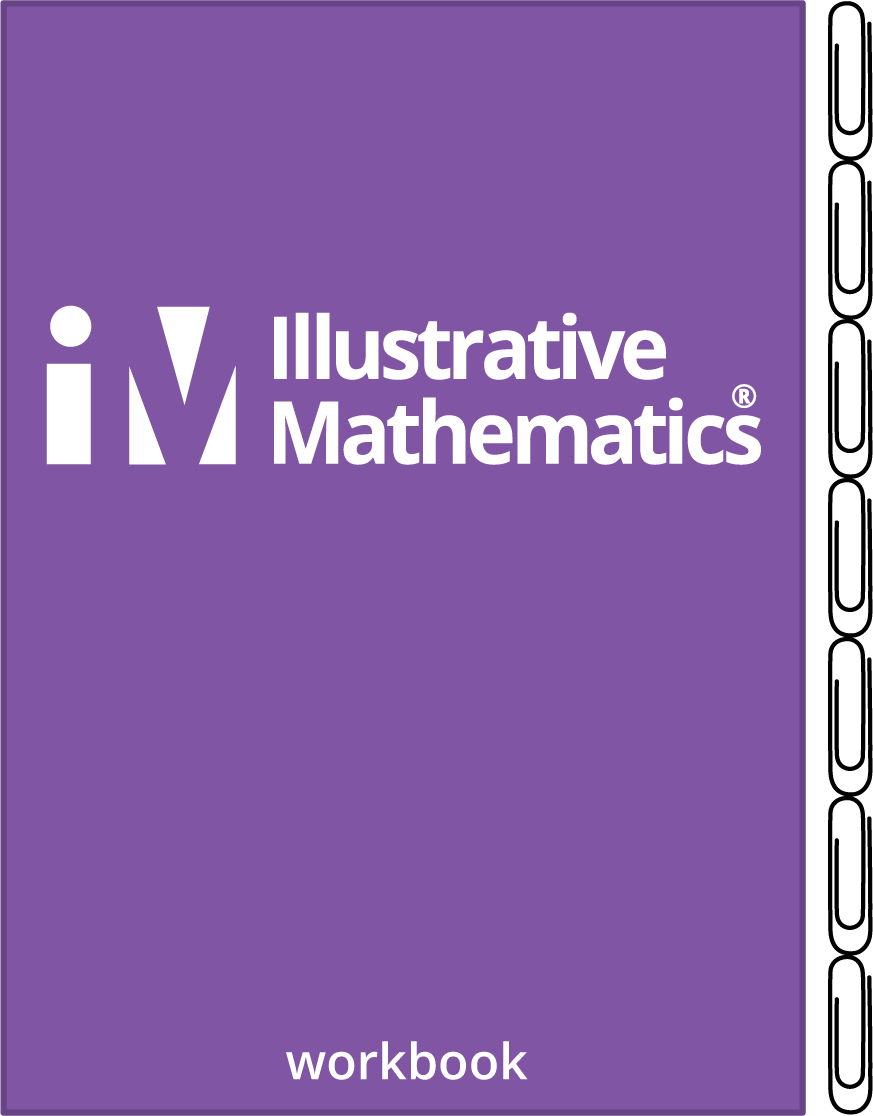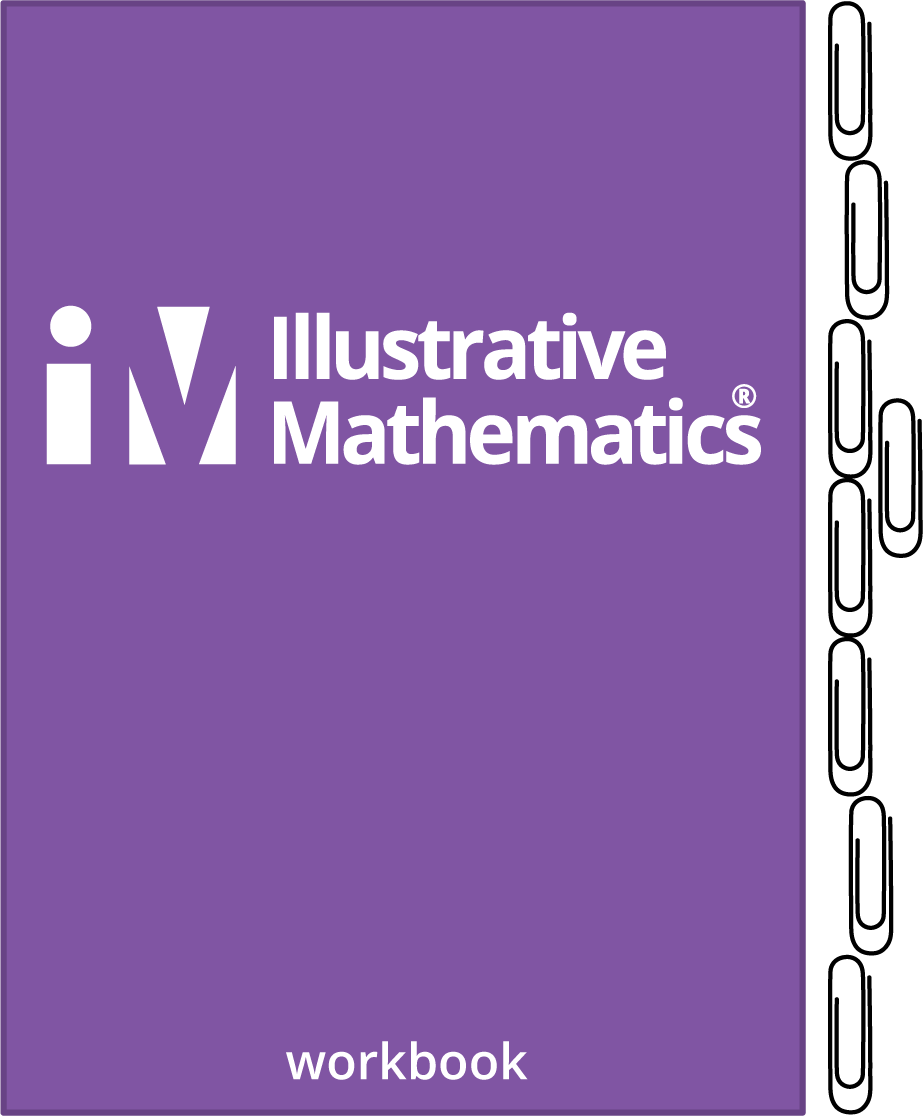Lesson 6
Measure with Paper Clips
Warm-up: Estimation Exploration: Length of the Desk (10 minutes)
Narrative
Launch
- Groups of 2
- Display the image.
- “What is an estimate that’s too high?” “Too low?” “About right?”
- 1 minute: quiet think time
Activity
- “Discuss your thinking with your partner.”
- 1 minute: partner discussion
- Record responses.
Student Facing

| too low | about right | too high |
|---|---|---|
| \(\phantom{\hspace{2.5cm} \\ \hspace{2.5cm}}\) | \(\phantom{\hspace{2.5cm} \\ \hspace{2.5cm}}\) | \(\phantom{\hspace{2.5cm} \\ \hspace{2.5cm}}\) |
Student Response
For access, consult one of our IM Certified Partners.
Activity Synthesis
- “How do you know that 15 is an estimate that is too low?” (If we add two more towers of 5, it still won't reach the end of the desk.)
Activity 1: Measure with Paper Clips (10 minutes)
Narrative
The purpose of this activity is for students to measure length by physically lining up length units that do not connect. Students discuss how measuring with paper clips is the same and different as measuring with connecting cube towers.
Advances: Speaking, Conversing
Required Materials
Required Preparation
- Each group of 2 needs about 30 1-inch paper clips.
Launch
- Groups of 2
- Give each student a copy of the blackline master and a handful of 1-inch paper clips.
Activity
- “We have been measuring length with connecting cubes. Now we are going to use a different object to measure. Measure the length of this rectangle using paper clips. When each partner has measured, compare your thinking with your partner.”
- 4 minutes: partner work time
- Monitor for a student who measures without gaps or overlaps.
Student Response
For access, consult one of our IM Certified Partners.
Advancing Student Thinking
- “Why do you think your number of paper clips is different?”
- “What is different about the way you used the paper clips to measure?”
Activity Synthesis
- Invite previously identified students to share.
- “How is measuring with paper clips the same and different as measuring with connecting cubes?” (Paper clips don’t connect. You need to be careful about laying paper clips down, they move easily. You still start at one endpoint and end at the other endpoint.)
Activity 2: Measure Our Workbook (10 minutes)
Narrative
Launch
- Groups of 2
Activity
- Read the task statement.
- 5 minutes: partner work time
- Monitor for students who disagree with Andre’s and Clare’s measurement and can explain why they are inaccurate.
Student Facing
Circle whether you agree or disagree with each student.
Explain why you agree or disagree.
-

Andre says that his student workbook is 5 paper clips long.
Agree
Disagree
I _______________ because _________________________________
-

Tyler says the workbook is 7 paper clips long.
Agree
Disagree
I _______________ because _________________________________
-

Clare says the workbook is 8 paper clips long.
Agree
Disagree
I _______________ because _________________________________
Student Response
For access, consult one of our IM Certified Partners.
Activity Synthesis
- “What advice would you give Andre and Clare the next time they measure?” (Place each paper clip end to end. Make sure they do not overlap and that there are no gaps between them.)
Activity 3: Measure Strips of Tape (20 minutes)
Narrative
The purpose of this activity is for students to measure the length of tape strips using paper clips as the length unit. Students apply what they have learned in the previous two activities to measure accurately.
Set up tape strips of the designated lengths around the classroom, labeled with letters (A-F). Assign each group a tape to start with and then have them rotate to a new tape, as time allows.
Supports accessibility for: Memory, Attention
Required Materials
Materials to Gather
Required Preparation
- Put strips of tape of the designated lengths on the floor. Label each strip. There should be one strip of tape per group.
- Tape A: 18 inches
- Tape B: 16 inches
- Tape C: 12 inches
- Tape D: 20 inches
- Tape E: 22 inches
- Tape F: 25 inches
Launch
- Groups of 2–4
- Give each group paper clips.
Activity
- “There are strips of tape around the classroom. Work with your partner to measure the length of each strip using paper clips. Complete each statement with the number of paper clips that make it true.”
- 10 minutes: partner work
- Monitor for groups who measure Tape C without gaps or overlaps.
Student Facing
Use paper clips to measure each strip of tape.
- The length of Tape A is _________ paper clips.
- The length of Tape B is _________ paper clips.
- The length of Tape C is _________ paper clips.
- The length of Tape D is _________ paper clips.
- The length of Tape E is _________ paper clips.
- The length of Tape F is _________ paper clips.
Student Response
For access, consult one of our IM Certified Partners.
Advancing Student Thinking
- “Can you show me how you used the paper clips to measure this tape strip?”
- “How did you use the advice we gave Andre and Clare when you were measuring?”
Activity Synthesis
- Invite previously identified students to share.
- “How do you know that you measured Tape C precisely?” (The paper clips had no gaps and no overlaps, the paper clips started at the beginning of the tape and went to the end of the tape.)
-
“Both groups made sure there were no gaps or overlaps with their paper clips. Both groups said Tape C is 12 paper clips long.”
Lesson Synthesis
Lesson Synthesis
Display Tape C.
“Today we measured length with paper clips. We just heard two groups explain how they used their paper clips to measure Tape C. Priya also measured Tape C and says it is 10 paper clips long. Do you think Priya can be correct? Why or why not?” (No. We measured Tape C and we all got a length of 12 paper clips. The line can’t be 12 paper clips long for us and 10 for her.)
Cool-down: Unit 6, Section B Checkpoint (0 minutes)
Cool-Down
For access, consult one of our IM Certified Partners.